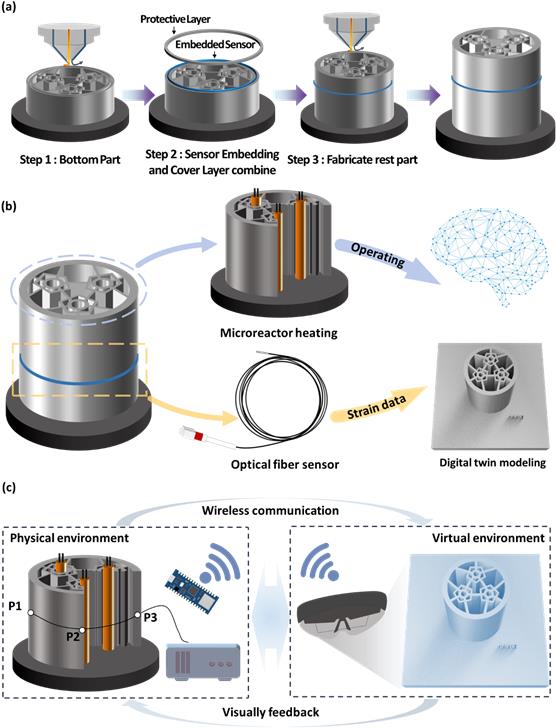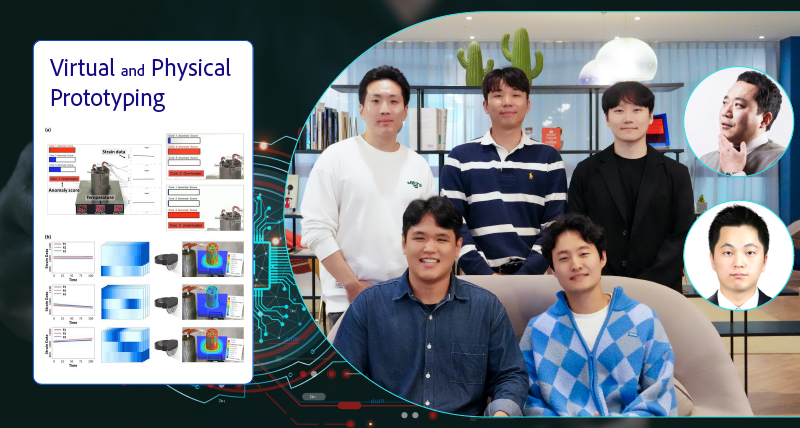As the demand for electricity rises in the age of artificial intelligence (AI), global tech companies are focusing on small nuclear reactors as a sustainable energy solution. A new remote monitoring technology, capable of detecting potential hazards in these reactors within just two seconds using advanced AI. This innovative system enables real-time monitoring of internal conditions, significantly reducing management costs and enhancing safety.
A research team, jointly led by Professor Im Doo Jung (Department of Mechanical Engineering, UNIST) and Professor Namhun Kim (Department of Mechanical Engineering/AI Graduate School, UNIST), along with Professor Hyungmo Kim from Gyeongsang National University, has introduced a smart component system designed for remote surveillance of small nuclear reactors. This system incorporates embedded optical fiber sensors that continuously monitor components and alert users to any abnormal conditions.
The breakthrough lies in a novel technology that combines 3D printing with AI, enabling the rapid processing of multiple continuous variables from optical fiber sensors. The team successfully manufactured smart nuclear parts using a Directed Energy Deposition (DED) printing method, seamlessly integrating fiber optic sensors within the metal components. This design ensures stability even in the harsh environments typical of nuclear reactors. The AI system rapidly analyzes data from the optical sensors to monitor thermal deformation in real time, allowing operators to detect irregularities and assess conditions remotely through an augmented reality (AR)-based digital twin interface.

Figure 1. Figure 1. DED sensor embedding and monitoring process.
In contrast to traditional large-scale nuclear reactors, microreactors (MRs) can provide stable power generation near energy-intensive facilities. However, maintaining safety in these plants is paramount. This new technology is poised to significantly enhance the safety and operational efficiency of next-generation small nuclear reactors by enabling AI to monitor critical thermal deformation signals that are often undetectable by human inspection.
Professor Jung noted, “We tackled the challenges associated with traditional inspection methods through our AI convergence technology, which can greatly enhance the stable and efficient operation of next-generation small nuclear power plants.” He further predicted that “this convergence technology could extend its applications beyond nuclear power, potentially benefiting diverse industries such as autonomous manufacturing systems, aerospace, and advanced defense.”
The findings of this research have been published in Virtual and Physical Prototyping (IF: 10.3, JCR < 7% in Manufacturing) on October 10, 2024. The research was supported by the National Research Foundation of Korea (NRF), the Ministry of Science and ICT (MSIT), the Korea Institute of Information & Communication Technology Planning & Evaluation (IITP), the Korea Institute of Energy Technology Evaluation and Planning (KETEP), and the Ministry of Trade, Industry and Energy (MOTIE).
Journal Reference
Hayeol Kim, Junyoung Seo, Adrian Matias Chung Baek, et al., “Direct energy deposition for smart micro reactor,” Virtual Phys. Prototyp., (2024).












